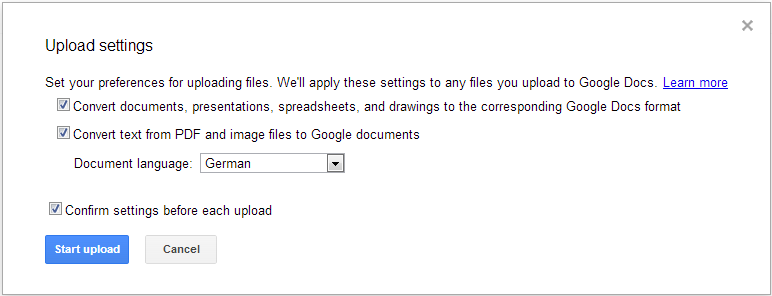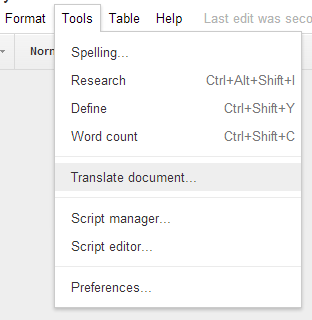The Technological Guide to a Foreign Language
Two month ago, I moved to Germany, and unfortunately I did not speak a word of German. Here is a set of tools I have been using to be able to find my way in this foreign language:
Browsing the web: Chrome
Of course, Chrome (desktop and mobile) has a built-in translation feature. When navigating to a German website, an instant translation of the entire website seamlessly replaces the original one. I find the user experience quite good, because seemless.

Instant translation in the street: Word Lens
You stumble upon a sign in the street, and have no clue about what it is saying. First thing that comes in mind is to open the Google Translate application on your mobile, it even does not require an internet connection thanks to the offline download of language packages. Unfortunately this would require re-typing the text in the input field (the picture input does not work offline, and has poor results).
The solution I am using for quick and dirty translations is Word Lens. If you never heard of it, it is an augmented reality app that replaces real-world texts by its translation. Here is the promotional video and a real-life usage example:

It is a great combination of interesting technologies: real time OCR, translation and image manipulation (to incorporate the final result on the original image). It gives instant result in its more natural way, which is a great user experience. Unfortunately, for its price, I think that its stability and user interface could be improved.
I’m really looking forward to try this using Google Glass, the great news is that apparently an app is already available. It will remove the need to pull out the phone and launch the app, however, is will not be full augmented reality as Google Glass is only a Head-up display.
Translating paper documents: OCR
The worst is when the data is not available digitally, for example, received official documents. Translating them word by word or manually re-typing them were not options when you receive a 10 page health insurance contracts. Once again, free online Google tools can help with this task:
- Scan: Unfortunately, a scanner is needed to get a PDF file containing black and white images of your document. A simple “portable scanner” can be very handy, but ideally a multi-page scanner is even faster. In my case, I wait the next day to scan them at the office.
-
OCR: Drag and drop the scanned PDF to the Google Drive website, make sure to enable the conversion to the Google Docs format on import. This will create a Google Doc document containing images of the scanned pages and the automatically extracted text in its original language.

-
Translate: The final step is to translate the text, no copy paste needed, Google can translate a full text document to a new one, keeping its layout and style.

- Profit: You end up with the entire document translated from German to English. Below each original scanned image you find the translated text with a similar formatting. And if like me you prefer to archive digitally your papers, the great side effect is that you have scanned your paper.
Learning: Duolingo
Of course, nothing will replace to actually know the language. While old-school lessons and grammar books are very often the best strategy, I have to mention duolingo, a really great application for progressive and regular lessons

Duolingo is a free mobile and desktop application will help you learn a new language using game mechanisms : your goal is to increase your level, you earn points each time you complete a lesson, you have to unlock current skill packages before going further…
The learning curve is really well designed so that you are making progress each time you use the app. The fact that it is a mobile application and lessons are short let you use in your daily commute for example. It is very well though to keep you learning the language across days: You get reminders, you can compare to your friends, using it everyday increase your earned points… And the app itself is so much well designed: its graphics are very nice and user interface is really well tested.
What’s interesting is that behind the scene, duolingo aims at using crowdsourcing mechanism to provide translations to customers. I wrote about this mechanism in a previous blog post.
Don’t worry, I’m not restricting myself to these technological tools to learn German, but I thought they were worth listing to emphasise how modern technologies can help us in what we would have consider a very difficult environment before. And you, do you have any other technological tip?
Auf Wiedersehen !